The Arms Corps
The Arms or combat corps - those which are directly involved in the fighting - can be divided into these subsidiary groupings:
Infantry
The infantry are the fighting soldiers. The role of infantry is to seek out and close with the enemy, to kill or capture him, to seize and hold ground and to repel attack by day or night, regardless of season, weather or terrain.
An infantry soldier's main weapon is a rifle and each infantry soldier carries what is needed to fight on his or her person. An Australian infantry soldier is traditionally known as a "digger" but in recent times the American nickname "grunt" has also been used.
Troops of 2 RAR move from The Hook to the Demilitarised Zone, 72 hours after the cease fire, Korea, 1953. 157687
Cavalry / Armour
The cavalry were originally soldiers who traveled and fought on horseback, usually with swords or lances. There were two main types of cavalry:
- Light cavalry, lightly armed soldiers on small fast horses, which was responsible for seeking out and harassing the enemy; and
- Heavy cavalry, more heavily armoured soldiers, often wearing armour, on larger and more powerful horses.
Heavy cavalry were used as "shock" troops to attack infantry formations and other cavalry.
Although not strictly cavalry, the Australian Light Horse units of the First World War can be loosely classified as such. They used horses to move quickly and were organised in the same way as cavalry units, but actually did their fighting dismounted as infantry soldiers. Although some light horse units were issued with swords late in the war, their main weapon was the rifle and bayonet. With the mobility provided by their horses, they were well suited to the reconnaissance roles for which light cavalry had traditionally been used.
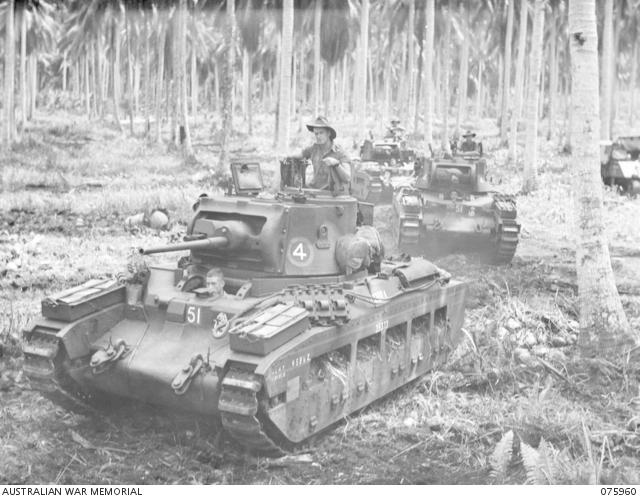
Troopers of the 2/4th Armoured Regiment manoeuvring their Matilda Tanks among the coconut palms near their camp, New Guinea, 1944
A mounted soldier, however, provided an easy target for a machine gun, and could be stopped by mud, barbed wire and trenches. The cavalry's usefulness on the battlefield was brought to an end by the industrialised slaughter of the Western Front. The horse was replaced with the tank. Its armoured protection rendered it impervious to the machine gun, and caterpillar tracks gave it the mobility on this new battlefield that the cavalry had once possessed. After the First World War cavalry units began converting to armoured units with tanks and armoured cars, but they carried with them still the dashing ethos and traditions of the cavalry. The first Australian Light Horse units began converting to armoured units during the 1930s and this process continued into the Second World War.
The role of armour on the battlefield is much the same as that of the old cavalry. Light armoured units in small armoured vehicles or tanks are responsible for reconnaissance while larger, more heavily armoured vehicles are used in the "shock" role, to attack enemy armour or to provide the infantry with mobile fire support.
Cavalry soldiers, and Australian light horsemen in particular, are known as "troopers". During the First World War light horsemen were nicknamed "Billjims", but now, having long ago traded in their horses for armoured vehicles, they are more commonly known as "turretheads".
Artillery
The role of the artillery is to fire long range weapons such as cannons and rockets at the enemy in order to inflict casualties and destroy equipment, buildings and fortifications. The artillery cooperates closely with the infantry and the armour to destroy enemy resistance before or during an attack, or to break up enemy units when they are attacking.
The artillery is also responsible for the large weapons used by ground troops to destroy enemy aircraft and tanks. Originally these were large-calibre guns but now also include a variety of rocket-propelled weapons.
Artillery soldiers are known as "gunners'.
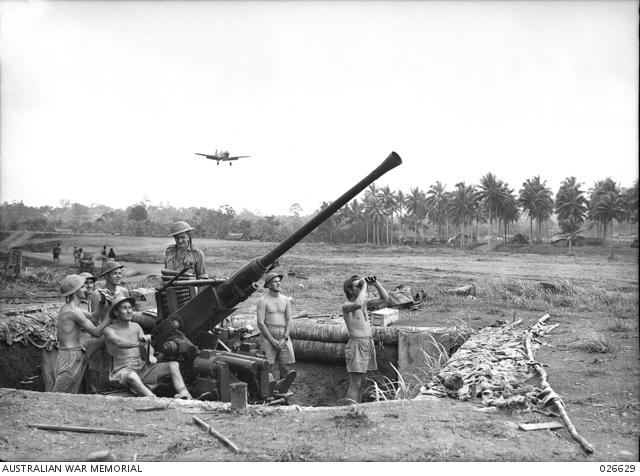
A Bofors 40mm anti-aircraft gun position manned by the 2/9th Light Anti-Aircraft Battery, Royal Australian Artillery, on a fighter runway in Papua New Guinea, 1942. 026629
Engineers
The engineers are the tradesmen of the battlefield. They are responsible for all manner of tasks which facilitate the conduct of operations by the infantry, armour and artillery. Engineers clear paths through enemy obstacles, such as minefields and barbed wire, they bridge rivers and anti-tank tank ditches and build roads, airstrips and landing grounds. Engineers also build obstacles and defensive positions, and lay minefields to resist enemy attacks. The nature of their work often requires engineers to work amongst the most forward of the infantry troops right under the noses of the enemy. An engineer is a fighting soldier in his own right and is known as a "sapper"; they are also nicknamed, in rhyming slang, "ginger beers".
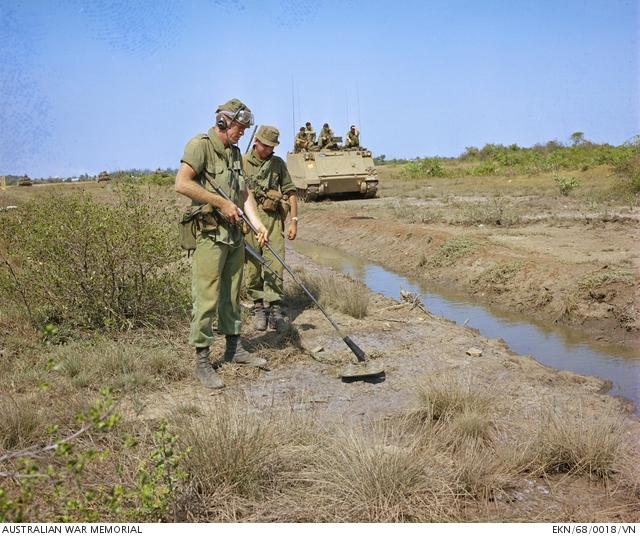
Army engineers use a detector, where mines are suspected, to clear the way for an armoured personnel carrier (APC). EKN/68/0018/VN
Aviation
The Aviation, or Flying, Corps flies aircraft over the battlefield. "Battlefield aviation", as it is known, was first used widely in the First World War. Originally, these aircraft were used solely to observe enemy positions and movement, but ways were quickly found to arm aircraft to allow attacks on targets on the ground and at sea, as well as on each other. After the war, the responsibility for the development and employment of air power largely passed to the newly formed air forces.
The Second World War confirmed the utility of aircraft over the battlefield. They were used for reconnaissance and attack missions, to transport troops and supplies and to evacuate casualties. Even closer cooperation between ground troops and aircraft became possible with the advent of the helicopter, a craft which could land in places conventional aircraft could not. The helicopter was first used widely in the Korean War for troop transport and casualty evacuation but it has become synonymous with the Vietnam War, where it was the jack of all trades carrying out attack, reconnaissance, search and rescue, transport, propaganda, fire- support and medical evacuation tasks.
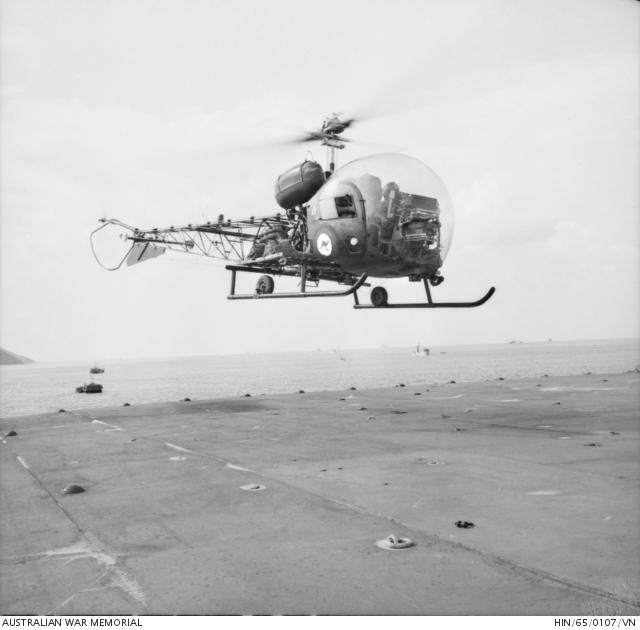
An Australian Army Bell Sioux Helicopter leaves the flight deck of HMAS Sydney, Vietnam, 1965. HIN/65/0107/VN
From 1921 until the early 1980s, the responsibility for the Australian defence force's aircraft lay with the RAAF, with the exception of the Fleet Air Arm and a handful of helicopters and light aircraft used by the Army for reconnaissance duties. In recent times, however, control of all the aircraft used directly in ground operations has been transferred to the Army.
Intelligence
Although not directly involved in the fighting, the Intelligence Corps is considered one of the arms because it provides much of the information that a commander uses to make decisions on the battlefield. Intelligence personnel are responsible for compiling and analysing information about the enemy and their positions, movements, equipment and tactics, the terrain, and the weather. This information is gathered from reports from the fighting units, aerial photographs, prisoners of war, captured documents and equipment and radio intercepts. Intelligence personnel are also responsible for ensuring the security of their own units so the enemy has as little opportunity as possible to gain information about them. Jokes are often made about military intelligence being a contradiction in terms; intelligence soldiers are known as "spooks".
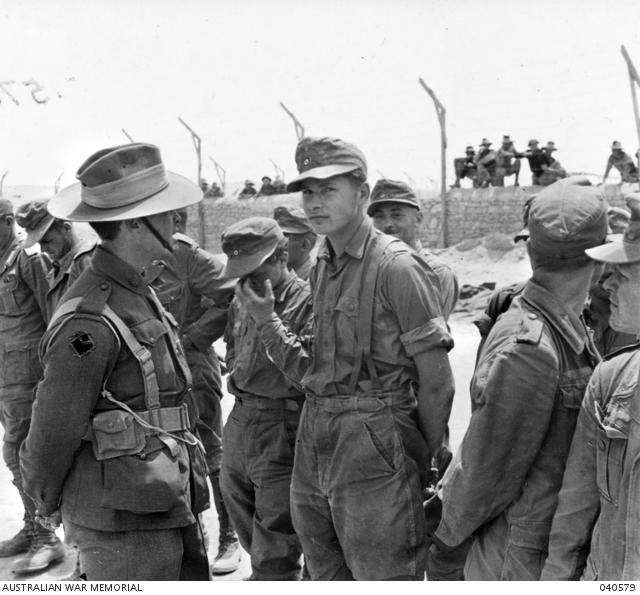
An Australian Intelligence Officer chatting with German prisoners of war, Tobruk, Libya, 1941 040579
Signals
Signals personnel are responsible for maintaining communications between units. In the days before electronic communications, this was achieved through the use of flags, heliographs (mirrors used to reflect sunlight) and dispatch riders and runners. With the advent of the telegraph, telephone and then radio, signals personnel became responsible for the operation and maintenance of this equipment. Although the Australian Army has been labouring for many years under the burden of Vietnam-era communications equipment, in recent years it has begun to introduce state of the art communications and computer equipment. Signals personnel are now also responsible for the Army's information technology resources. Signals personnel are known as "signallers" and, since their job requires much talking on various communications devices, they have been nicknamed "chooks".
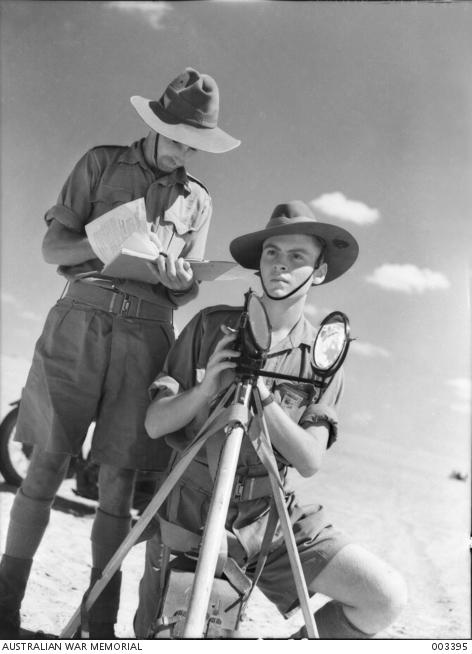
Men of the Signals section send messages across the desert by means of heliograph, 1940. 003395
